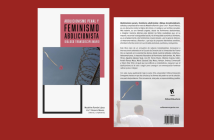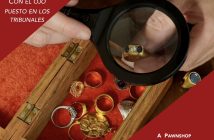
Review
By: Ella Scholz*
The wrongful conviction and incarceration of innocent people represents a crass and tragic misuse of a state’s policing powers. Nevertheless, we can say with certainty that there are innocent people serving decades-long sentences in American prisons right now. However, as Daniel Medwed’s recent publication, Barred: Why the Innocent Can’t Get Out of Prison (hereinafter “Barred”),[1] demonstrates, the United States criminal justice system is not designed to ensure that these innocent people can find their way out of prison. As such, Barred opens an important discussion about one of the most tragic mistakes which may occur within any criminal justice system: the wrongful incarceration of an innocent person.
Barred is organized in a thoughtful and easy-to-read manner. The book is divided into four parts. The first three parts analyze how our criminal appeals systems, post-conviction remedies, and certain other executive branch functions, all procedurally fail to adequately identify people who have been convicted of crimes they did not commit. The fourth part of Medwed’s book, titled A Path Forward, discusses some promising solutions to the flaws Medwed identifies within the U.S. criminal justice system in the first three parts of the book.
Each part focuses on a different avenue for the judicial review of a person’s conviction; broadly, appeals processes, post-conviction mechanisms, and executive branch mechanisms. Each chapter focuses on a different issue that the innocent face as they attempt to make use of these mechanisms to secure their freedom. For instance, in Part II of Barred, which addresses post-conviction mechanisms, the author discusses the flaws of several such apparatuses, such as the postconviction DNA-Testing laws which the states have individually chosen to enact. The chapters in Barred follow a similar structure: an issue that innocent prisoners face is presented, the issue is discussed, and potential solutions are offered. As such, it could be said that the structure of Medwed’s chapters quickly becomes repetitive. However, this repetitive format is ultimately easy to follow and makes Medwed’s discussion of criminal procedure accessible to many readers.
Barred also features the stories of multiple miscarriages of justice, which involved the punishment of people for crimes they did not commit. The facts of these cases are interwoven throughout the book to illustrate the different procedural issues Medwed discusses. For instance, in Medwed’s chapter on judicial deference in appeals cases, the author discusses the issues Jeff Deskovic faced in proving his innocence after being wrongfully convicted for the murder and sexual assault of a fifteen-year-old girl. Jeff Deskovic’s criminal appeal was bluntly denied, and some of his arguments were rejected by the appeals court without adequate explanation. Twelve years after his rejected appeal, DNA evidence would prove Deskovic’s innocence. Medwed alludes to this case to exemplify his arguments about the difficulties innocent prisoners face during the appeals process due to the deference with which appellate courts must treat jury verdicts.
Medwed’s allusion to actual cases to exemplify the procedural issues innocent prisoners face within the U.S. criminal justice system, and the compassion he demonstrates for these people through his writing, imbues Barred with an emotional depth that helps transmit the tragedy of wrongful convictions. These stories also serve to grab the reader’s attention and tangibly illustrate the legal concepts Medwed discusses. As a result, Barred is a book that is emotionally impactful and likely to interest people who work in the legal field, as well as those who do not have an academic background in the field of law.
Medwed further succeeds in alerting his readers to the true dangers that the procedural design issues he discusses represent for individuals. His discussion of the cases of innocent people who faced incarceration often includes a description of the struggles they faced even after their exoneration. In Medwed’s chapter titled The Supremes, he discusses the case of Larry Youngblood (a case that was even heard by the Supreme Court at one of its stages). Youngblood spent several years wrongfully imprisoned and would never fully recover from the injustice he experienced. Medwed writes that Youngblood’s case had “far-reaching ripple effects”, highlighting how an injustice done to an innocent person who has been incarcerated does not end with their exoneration.
In terms of scope, one could argue that Medwed’s book attempts to address too much material. Barred is meant to provide an overview of the major procedural mechanisms which keep innocent people in jail within the U.S. criminal justice system. In this sense, Barred is an ambitious endeavor that addresses an important societal issue. However, readers who have not studied the legal topics discussed in the book, will be unlikely to seriously internalize, or at least fully comprehend them, given the amount of legal and factual knowledge the book contains. A book of a more limited scope could have been more effective in addressing the technical legal issues presented, while also making it a more digestible and memorable read for the wider, non-legal audience.
Another issue Barred faces is the inherent difficulty of describing the reality of a complex criminal justice system that is hardly uniform across the United States. For instance, the federal government is divided into circuits and districts whose interpretations of procedural rules may vary. At the same time, each state runs its own criminal justice system, which may be procedurally similar to the federal system, but may also diverge in some aspects. That is, it is simply difficult to generalize about the criminal procedures which dictate the varied criminal justice systems that exist in the country. Medwed does a good job of highlighting the general issues which innocent prisoners face throughout the United States, but his approach necessarily involves a sacrifice in the accuracy of the law he seeks to describe. To be fair, this is an inherent issue that any book that attempts to cover a legal issue on a national level will face.
Ultimately, Barred achieves its lofty and principal goal: to demonstrate that our criminal justice system is not adequately designed to identify the innocent people who are currently incarcerated in the United States. As such, Medwed’s book is a worthwhile read for people who are interested in thinking critically about criminal justice reform. Medwed’s use of actual cases to illustrate his points is effective in demonstrating that our criminal justice system requires reform. Barred answers a question that should be of interest to many Americans: can innocent people who have been incarcerated reliably prove their innocence? The answer Medwed supplies is a resounding no. This is due to inherent design issues which pervade our criminal justice system. This conclusion is contrary to all common-sense understanding of a just judicial system, which is why Medwed’s task of alerting readers to this reality is so laudable.
Barred should also be of interest to readers in Puerto Rico. Many of the procedural issues innocent prisoners face, as described by Medwed, are issues which exist within the island’s criminal justice system. Although Medwed in no way directly addresses Puerto Rican law in his book, his overview of the general design flaws he has identified in the U.S. criminal justice systems could serve to fuel discussions surrounding the ways in which innocent prisoners in Puerto Rico are kept from demonstrating their innocence.
In summary, Medwed’s goal of bringing greater awareness to the difficulties innocent prisoners face as they attempt to prove their innocence is certainly achieved by Barred. The book is worth reading for anyone interested in criminal justice reform, especially those who worry about the plight of people who have been wrongfully incarcerated for crimes they did not commit.
* The author has a J.D. from the University of Puerto Rico School of Law and a B.A. from Brown University. This review was written as part of the requirements for the course ADN Post Sentencia, taught by Dr. Iris Y. Rosario Nieves.
[1] Daniel S. Medwed, Barred: Why the Innocent Can’t Get Out Of Prison (2022).




